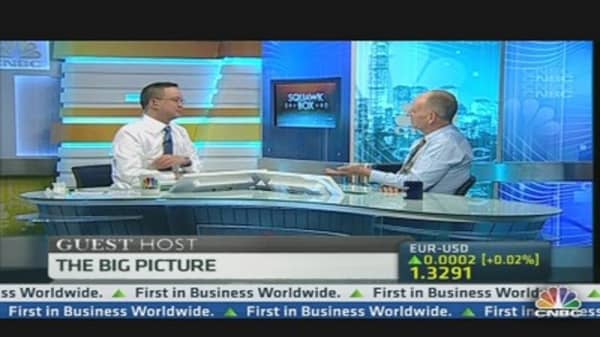Worries about an impending bust in the world's largest sovereign bond market - the U.S. - have heightened following the release of the Federal Reserve's latest minutes on January 4, which hinted that
the beginning of the end is in sight
for the central bank's ultra-loose monetary policy.
The Fed's hawkish tone sent bond yields climbing higher, with the benchmark 10-year note hitting an 8-month high at the beginning of the month, however, they have since pared back losses.
Yields on benchmark Treasurys have fallen around 200 basis points over the past five years as weak economic growth and volatile stock markets sent investors into safe-haven bonds.
(Read More:
Why a Spike in US Bond Yields May Be Coming
)
But now there are several factors that point to a bond bubble burst in 2013, said Roche. An earlier-than-anticipated return of inflation in the second-half of the year as a result of past easy monetary policy and "extreme" valuations in the asset class will drive the crash, together with what Roche sees as "a lessening impact of quantitative easing (QE) on sovereign bond markets, principally due to declining marginal returns."
The Fed, which has launched three rounds of bond purchases since the financial crisis hit - the most recent being QE3 in September 2012 - has played a critical role in suppressing debt yields. However, with yields already so low, the effectiveness of quantitative easing is now being called into question, Roche said.
(Read More:
Flight to Safety in Bonds May Actually Mean More Risk
)
"The talk is of changing tack — even in the Fed according to its last minutes and at the Bank of England, where it is almost consensus that QE is a spent force. Once central banks stop buying, the bull market bond story is over because it is central banks that have been rigging the bond market, buying between 30-40 percent of all net new issuance," Roche said.
Either a halt to central bank bond purchases or inflation would mean a wall of money would flow out of the credit space and towards equities and commodities, he added.
Discussing the implications of a U.S. bond bust, Roche said a 200 basis point increase in 10-year Treasury yields, would cause a 15-20 percent decline in the value of those bonds.
"This is not an extreme assumption. A rise of 200 basis points in 10-year treasury yields would only take us back to 2009 levels."
Roche is not alone in his predictions for a collapse in the treasury market. In March 2012, billionaire Wilbur H. Ross told CNBC to get ready for a
bust in 10-year bond prices
and longer-dated Treasurys, because the idea that inflation is gone and artificially low rates can last is "silly."




